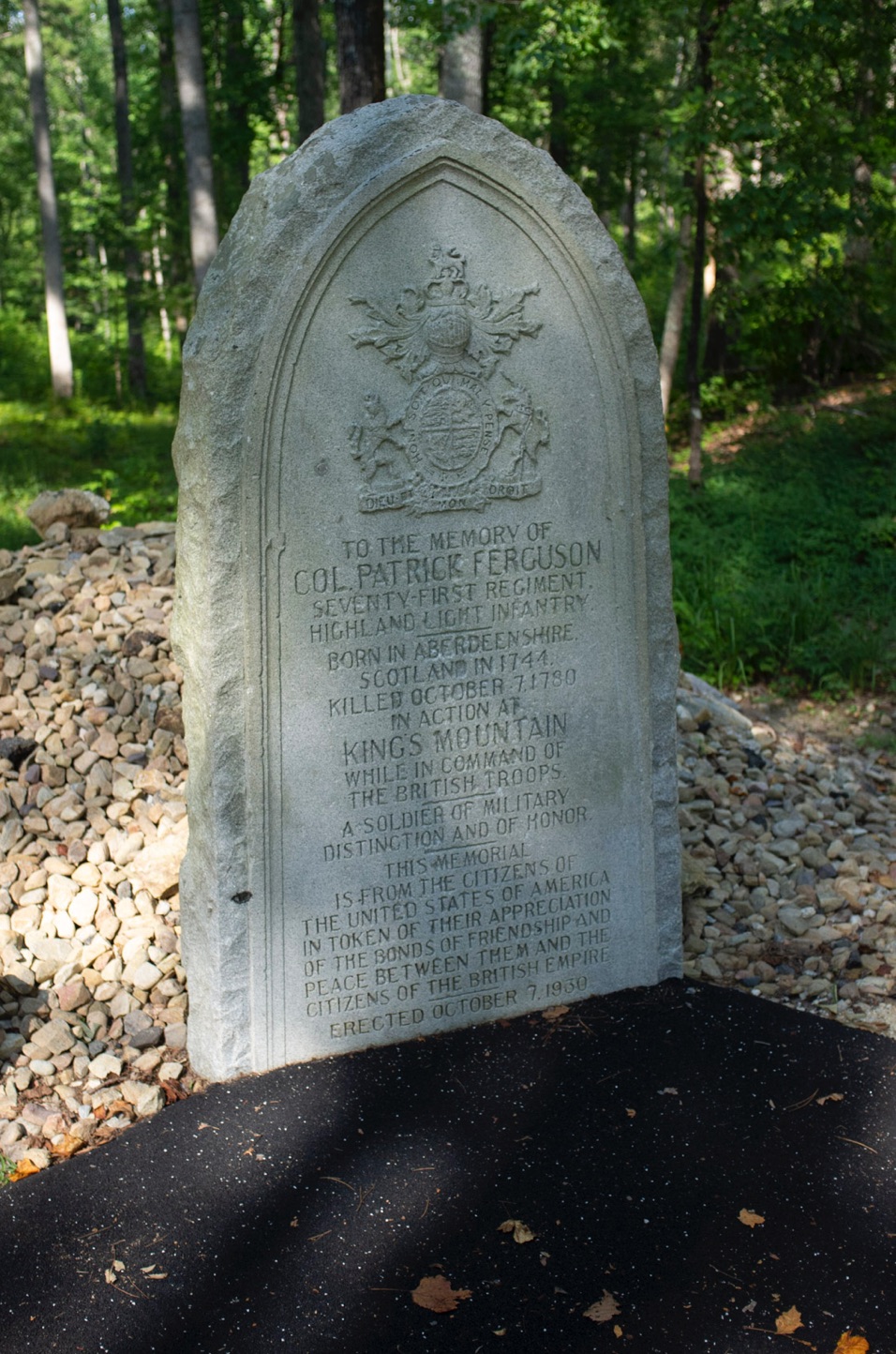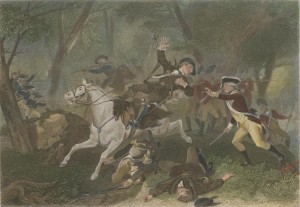
My wife and I visited the Kings Mountain Battlefield last Sunday. It’s a 1.8 mile walk around and up over the mountain, reading plaques and imagining the smoke-filled scene of 1780. It was fought between colonists who were loyal to the crown (who wore slips of white paper in their hats) and independence seeking patriots (who wore bunches of pine needles in their hats).
The hated commander of the Loyalist forces was Col Patrick Ferguson. I’ve researched Ferguson recently and found him to be quite an interesting character. He was a Scot and was raised in Edinburgh, where his family associated with some of the the leaders of the Scottish Enlightenment. Indications are that he was sympathetic to the American patriot cause.
Acknowledged as the best marksman in the British Army, Ferguson spent time, while convulsing from wounds suffered in the West Indies, designing and fabricating a breech loading rifle. With it, he was able to fire 15 accurate shots in one minute, a HUGE improvement over the muzzle-loading Brown Bess muskets used by the British Army. Because of the expense of mass producing Ferguson Rifles, they were only used by a special unit that Ferguson established early in the American Revolutionary War. He admired the style of Indian warfare practiced by many of the patriot soldiers, and had his soldier wear (somewhat) camouflaged uniforms and practice guerrilla style fighting. Wounded again, he lost his unit to other officers, who had ridiculed his tactics as less than “honorable.”

Returning to service he was assigned to raise a loyalist militia to assist Gen Cornwallis’ Southern Campaign. It was the militia that he raised that was defeated on Kings Mountain, where he was killed and his body mutilated. His blunder was sending a letter to the Overmountain Men, threatening retribution against their families if they marched east to fight the British. The Overmountain Men came. They were rough frontiersmen from the Appalachian mountains and beyond, accustomed to eking a living from the wilderness.
The Battle of Kings Mountain was preceded by the Battle of Ramsour’s Mill, which resulted in a similar outcome. My interest in these events comes partly from the fact that my ancestral patriarch of the 18th century had children who served on both sides of that war.
